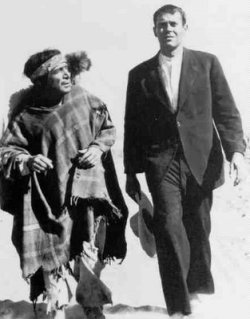The Day of the Triffids (1951) by John Wyndham is an entertaining but awkward marriage of scifi silliness and social parable. When almost the entire population goes suddenly blind after watching a weirdly green meteor shower, the human race struggles to survive and behave decently amid chaos and despair. Survival is made harder by the rise of the triffids: towering mobile carnivorous plants genetically engineered to prey on humans. The opening scene of our hero wandering from a hospital into deserted London inspired 28 Days Later, while the brave new world of blindness surely contributed to Jose Saramago’s Blindness.
British literature
Review of Charlie and the Chocolate Factory
Roald Dahl. Charlie and the Chocolate Factory. 1964. Phantasmagoric children’s story.
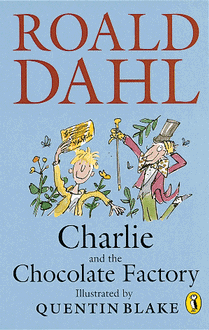 I began this book with a scowl: it’s about chocolate lust and a weirdo recluse—who cares? Although I continue to resist the notion that Dahl has crafted a sublime text, Charlie and Chocolate Factory is an entertaining fluff piece in which Willy Wonka is not a pedophile, greedy or obnoxious children suffer well-deserved punishments, and golden-haired little boy Charlie Bucket (a one-dimensional character) lives happily ever. Horatio Alger myth, anyone?
I began this book with a scowl: it’s about chocolate lust and a weirdo recluse—who cares? Although I continue to resist the notion that Dahl has crafted a sublime text, Charlie and Chocolate Factory is an entertaining fluff piece in which Willy Wonka is not a pedophile, greedy or obnoxious children suffer well-deserved punishments, and golden-haired little boy Charlie Bucket (a one-dimensional character) lives happily ever. Horatio Alger myth, anyone?
Dahl tries to raise the stakes by presenting Charlie’s family as poor to the point of starving. Yet Dahl presents their only viable alternative to starvation as buying a Golden Ticket (a lottery ticket) and by sheer luck winning the prize of a lifelong chocolate-filled debauch. I thank Dahl for his memorable outburst against permitting children to watch television, but I hate his implicit message that the proletariat (Charlie’s father is an unemployed factory worker) can attain fiscal security only by winning the lottery, as if wasting scarce money on a million-to-one shot is a greater leveler than work, faith, love, or revolution. Sorry, Roald Dahl. We make our own luck.
To end with a quote from Eleanor Cameron, Dahl’s phantasmagoric fantasy is “delectable and soothing while we are undergoing the brief sensory pleasure it affords but leaves us poorly nourished with our taste dulled for better fare.”
A Whimsical New Novel with Jeeves and Wooster
Sebastian Faulks. Jeeves and the Wedding Bells. 2013. Toff British drollery.
 This tribute to P. G. Wodehouse’s iconic series featuring Jeeves and Wooster is superb, deftly evoking—thankfully not imitating—Wodehouse’s whimsical style while rendering the characters more serious and sharply etched. The bearded and bluff Sebastian Faulks, who wrote an enjoyable James Bond sequel in 2008, delivers Wodehouse’s usual absurdist hodgepodge of mistaken identities, country estates, disastrous dinner parties, rooftop getaways, and star-crossed romances. However, Faulks puts a novel spin on the Jeeves-Wooster relationship by dropping Bertie into the servant’s hall as valet to Jeeves, who finds himself masquerading as a peer for good and sufficient reasons (meaning Bertie is trying to help an old school chum regain his lost love). Meanwhile, Bertie himself has fallen in love yet again—but this time, Jeeves approves.
This tribute to P. G. Wodehouse’s iconic series featuring Jeeves and Wooster is superb, deftly evoking—thankfully not imitating—Wodehouse’s whimsical style while rendering the characters more serious and sharply etched. The bearded and bluff Sebastian Faulks, who wrote an enjoyable James Bond sequel in 2008, delivers Wodehouse’s usual absurdist hodgepodge of mistaken identities, country estates, disastrous dinner parties, rooftop getaways, and star-crossed romances. However, Faulks puts a novel spin on the Jeeves-Wooster relationship by dropping Bertie into the servant’s hall as valet to Jeeves, who finds himself masquerading as a peer for good and sufficient reasons (meaning Bertie is trying to help an old school chum regain his lost love). Meanwhile, Bertie himself has fallen in love yet again—but this time, Jeeves approves.
Power & Glory: Anglo-Catholic Existentialism in Mexico
Graham Greene. The Power and the Glory. 1940. Anglo-Catholic existentialism.
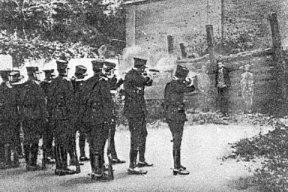
Execution of Father Miguel Pro, Mexico City, 1927. Pro was later beatified as a martyr by John Paul II.
This poignant and most Anglo-Catholic of novels traces a wandering Mexican “whiskey priest” tormented by self-doubt—recognition of his own sins of alcoholism, fornication, and pride—as he labors to fulfill his clerical duties and evade arrest and execution by Mexico’s revolutionary authorities during the 1920s. His nemesis is an ascetic lieutenant, who like Javert is gripped by an idee fixe, in his case to purge the nation of priestly vestiges of the old order so that no children of Mexico will ever have to grow up amid the squalor and ignorance he himself survived.
Despised by his indigenous congregants, who nevertheless remain loyal to the God he represents, the priest escapes his enemies, only to return at the behest of a traitor to fulfill his duty to confess and absolve, even if he cannot forgive himself and even if no priest will attend his death. Betrayal comes at the hands of a yellow-fanged “half-caste” Judas who embodies the racial unease with which ethnoculturally homogenous Englishmen greet mestizaje (the process of racial intermingling that became an ideology for revolutionary Mexico).
Greene explores a lonely little martyr’s “dark night of the soul” amid the rich, stained, filthy fabric of the beautiful tapestry of humanity. The novel is a captivating character study of despair, duty, and redemption, deeply rooted in Greene’s own troubled Catholicism. So relentlessly realistic is its portrait of a priest’s descent into sin and doubt, with redemption but a “perhaps,” that the Catholic Church actually threatened to proscribe the novel, according to this article in The Atlantic.
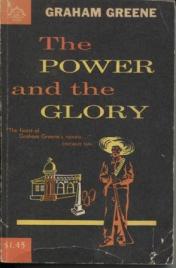 I have just a few small caveats. First, the priest and the atheistic lieutenant (whom the priest acknowledges, in a surprised tone, to be a “good man”) seem to be Mexican in name only—we get no sense of a uniquely Mexican sensibility. Also, the intrusions of minor English-speaking characters feel jarring at times.
I have just a few small caveats. First, the priest and the atheistic lieutenant (whom the priest acknowledges, in a surprised tone, to be a “good man”) seem to be Mexican in name only—we get no sense of a uniquely Mexican sensibility. Also, the intrusions of minor English-speaking characters feel jarring at times.
But these are mere foibles. With his dour Indian peasants and his smothering, enervating sense of desolation, Graham Greene taps into his own experiences traveling in Mexico to evoke the Hispanic arts’ baroque, terrifying sense of the sublime (see Kant‘s Observations on the Feeling of the Beautiful and Sublime).
On Victorian Morality’s Sacrificial Altar
Thomas Hardy. Tess of the d’Urbervilles. 1891. Romantic tragedy. Very English.
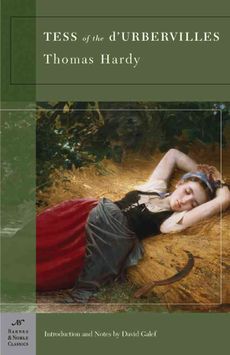
First and foremost, Thomas Hardy writes with wonderful elegance, recalling the sure and serene prose of his contemporaries, Henry James and George Eliot. Also like the best of James, Tess of the d’Urbervilles is very tightly plotted, including just three major characters and developing a rather simple story gradually and consistently. Unlike the patrician James or the rather middle-class Eliot, however, Hardy writes lovingly of English peasants. And more so than his contemporaries, Hardy uses his novels to assail the bourgeois Victorian “values” that condemned women (but not men) so utterly for sexual infractions, regardless of their circumstances.
Faith and fate are other key themes in this model of literary naturalism. Tess leaves us to speculate whether Tess’s fate arose from a character flaw inherited from her d’Urberville ancestors (Neo-Darwinism here), or whether she was victimized by divine caprice, and even whether she was being punished for her ancestors’ sins.
Fatalism pervades this novel as deeply as does Hardy’s “aesthetic, sensuous, pagan pleasure in natural life.” Tess is repeatedly described as a child of nature, likened to Eve and Demeter, glimpsed lying down on the sacrificial altar of Stonehenge like some virginal pagan of old.
Yet this novel falls short of greatness. The characters are unindividuated types who revert instead of developing, and Tess is a passive heroine. She does what men bid her, reluctantly, sadly, but inevitably. This story has murder, betrayal, true love, and religious doubt—every fascinating and frightening behavior in the book of existence. So why is the novel so stifled and stilted? “Oh, it is not Angel—not my son—the Angel who went away!” wails Mrs. Clare. No one actually talks like that! For all your efforts at naturalism, my dear Mr. Hardy, you have not verisimilitude.

